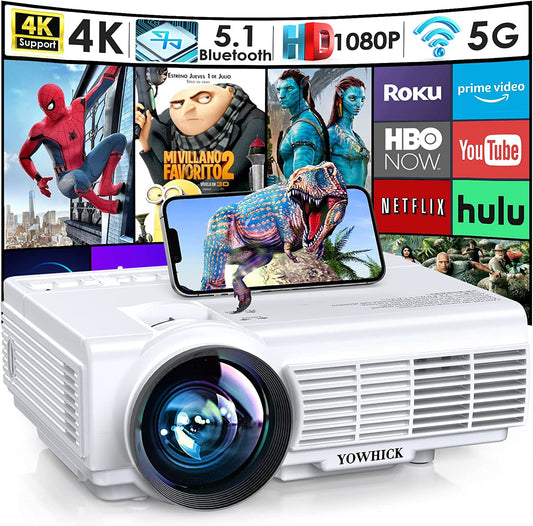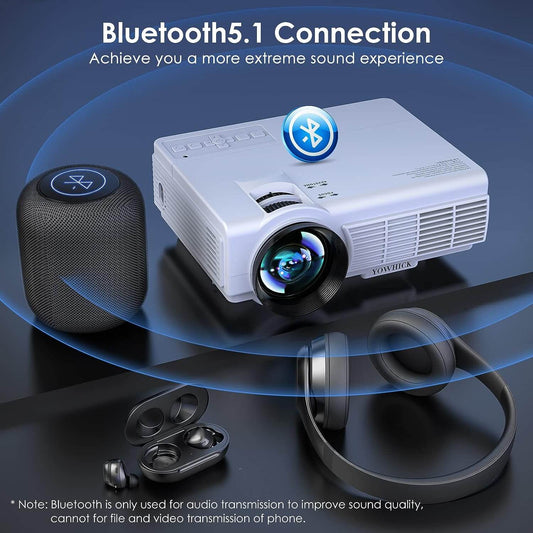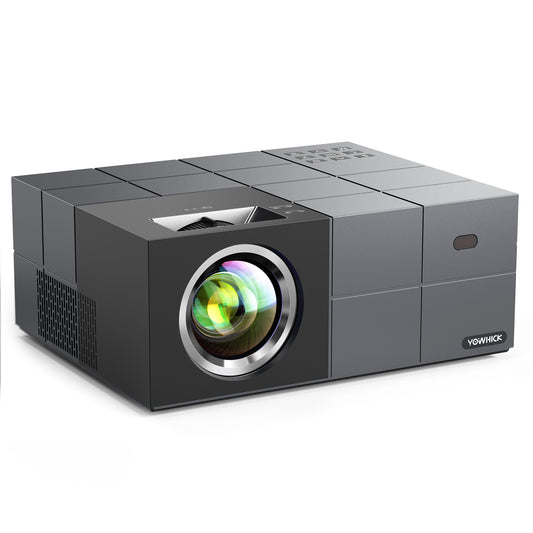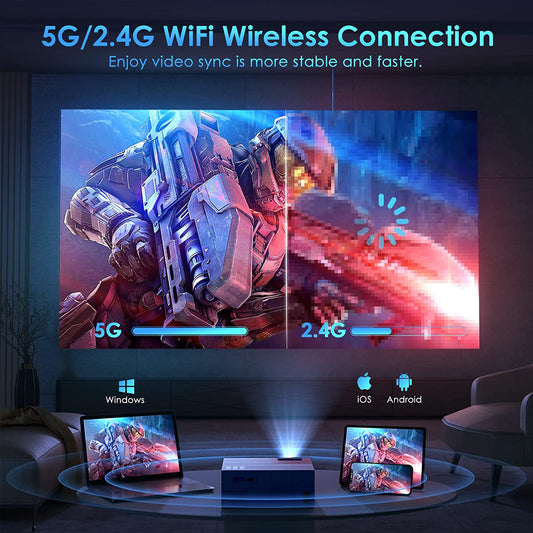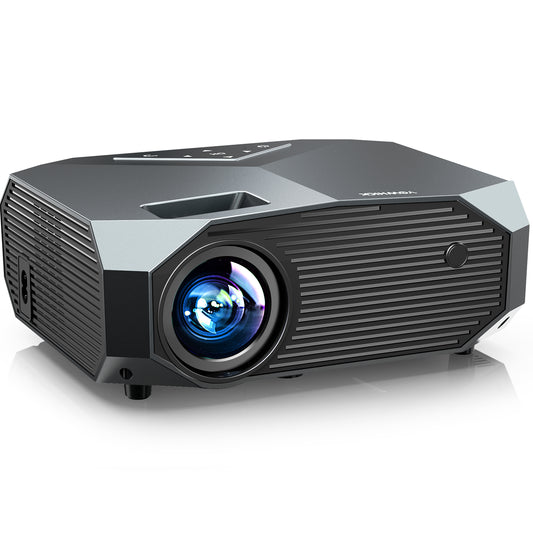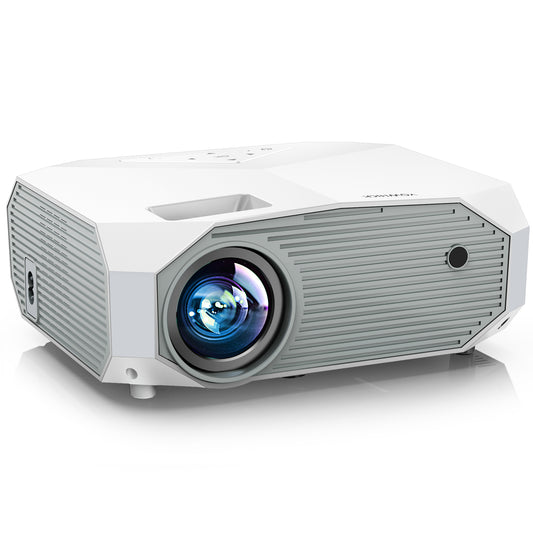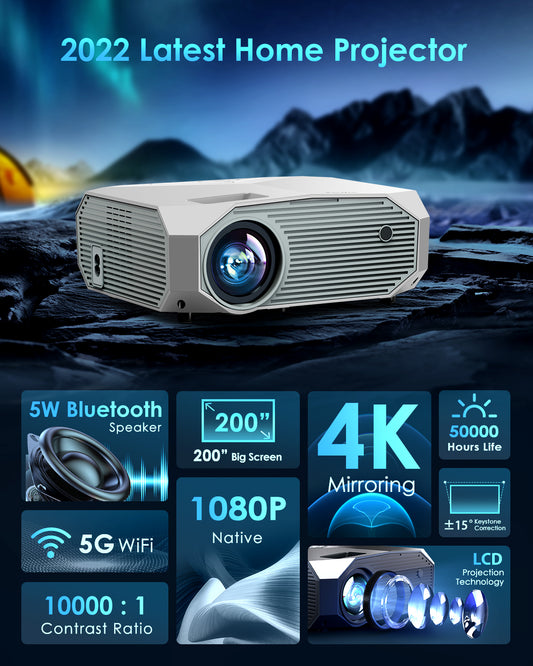When it comes to creating a truly immersive home theater or presentation setup, hanging a projector screen is a critical step. The right screen can enhance your viewing experience and bring your favorite movies, games, and presentations to life. But with the myriad of options available, how do you choose the perfect projector screen for your needs? In this comprehensive guide, we will take you through the step-by-step process of hanging a projector screen, from understanding the different types of screens to selecting the right one for your specific requirements.
Different Types of Projector Screens
Before you begin hanging your projector screen, it's important to familiarize yourself with the different types of screens available in the market. Each type offers unique features and benefits, catering to various viewing preferences and room setups. Let's explore some of the most common types of projector screens:
- Fixed Frame Screens: Fixed frame screens are designed to be permanently mounted to a wall or frame. They provide a sleek and professional appearance, with a taut surface that eliminates wrinkles and creases. Fixed frame screens are ideal for dedicated home theaters or spaces where the screen will be in a fixed position.
- Motorized Screens: Motorized screens offer the convenience of remote-controlled operation. With just a press of a button, the screen can smoothly retract or descend from the ceiling or wall. Motorized screens are popular for multipurpose rooms or spaces where the screen needs to be hidden when not in use.
- Retractable Screens: Similar to motorized screens, retractable screens can be rolled up or down manually. They provide flexibility in adjusting the screen height according to the desired aspect ratio or the content being displayed. Retractable screens are versatile options for rooms with varying viewing needs.
- Portable Screens: Portable screens are lightweight and designed for easy setup and transport. They are typically tripod-mounted or come with a free-standing frame. Portable screens are convenient for on-the-go presentations, outdoor movie nights, or situations where a fixed installation is not possible.
Selecting the Right Projector Screen Size: Optimize Your Viewing Experience
Now that you're familiar with the different types of projector screens, it's time to determine the right screen size for your setup. The screen size plays a crucial role in delivering an immersive and visually engaging experience. Consider the following factors when selecting the optimal screen size:
- Room Dimensions: Measure the dimensions of your room to determine the available space for your projector screen. Consider the distance between the screen and the viewers, as well as any obstructions that may affect the viewing angles.
- Seating Distance: The seating distance is the distance between the viewers and the screen. It's essential to strike a balance between being too close, which can cause discomfort, and being too far, which may result in a diminished viewing experience. Use recommended guidelines based on screen size and resolution to determine the ideal seating distance.
- Projector Specifications: Take into account the throw distance and zoom capabilities of your projector. These specifications will influence the image size that the projector can effectively display. Refer to the projector's user manual or online resources for guidance on the ideal screen sizes based on its specifications.
- Viewing Angles: Consider the viewing angles from different seating positions in the room. Ensure that the chosen screen size allows for comfortable viewing from all desired positions without straining necks or eyes.
Selecting the Appropriate Projector Screen Material: Enhancing Image Quality
The choice of projector screen material significantly impacts the
image quality and overall viewing experience. Different screen materials have varying properties that affect factors such as brightness, contrast, color accuracy, and viewing angles. Consider the following options when selecting the appropriate projector screen material:
- Matte White Screens: Matte white screens are the most common and versatile option. They provide a wide viewing angle, uniform light diffusion, and accurate color reproduction. Matte white screens work well in rooms with controlled ambient light and are suitable for a variety of content, including movies, gaming, and presentations.
- Grey Screens: Grey screens are designed to enhance contrast and black levels by absorbing ambient light. They are ideal for rooms with higher levels of ambient light or situations where light control is challenging. Grey screens can deliver deeper blacks and improve image detail, but they may narrow the viewing angle slightly compared to matte white screens.
- High-Gain Screens: High-gain screens are engineered to reflect more light back to the viewers, resulting in increased brightness. They are beneficial in environments with significant ambient light or when the projector's brightness output is limited. High-gain screens can enhance image visibility, but they may have a narrower optimal viewing angle and are more susceptible to hotspotting.
Projector Screen Installation Options: Find the Perfect Mounting Method
Now that you have chosen the right projector screen type and size, it's time to explore the various installation options available. The mounting method you choose will depend on your space, room layout, and personal preferences. Let's explore some popular projector screen installation options:
- Wall Mounting: Wall mounting involves attaching the screen directly to a wall using brackets or mounting plates. This method provides a fixed and secure installation, ensuring a stable and consistent viewing experience. It's important to ensure that the wall can support the weight of the screen and that the mounting is level and properly aligned.
- Ceiling Mounting: Ceiling mounting suspends the screen from the ceiling using brackets or a mounting kit. This method is ideal for rooms with limited wall space or for creating a seamless, floating screen effect. Ensure that the ceiling structure can support the weight of the screen and that the screen is properly aligned with the viewer's line of sight.
- Floor Stand: Floor stands are freestanding frames that support the screen. They are portable and offer flexibility in screen placement. Floor stands are convenient for temporary setups, multipurpose rooms, or situations where wall or ceiling mounting is not feasible. Ensure that the floor stand is stable and secure to prevent wobbling or tipping.
- Tensioned Screens: Tensioned screens utilize a mechanism that keeps the screen surface taut, minimizing wrinkles and creases. They are available in both motorized and manual versions. Tensioned screens provide a flat and smooth viewing surface, ensuring optimal image quality. They are often used in dedicated home theater setups.
Adjusting Screen Height and Angle: Achieving Optimal Viewing Performance
Proper positioning and alignment of your projector screen are crucial for achieving optimal viewing performance. Here are some key considerations when adjusting the height and angle of your screen:
- Eye Level: Position the screen at or slightly below eye level when seated for comfortable viewing. This allows for a more natural viewing experience and reduces strain on the neck and eyes. Adjust the screen height accordingly, considering the average eye level of the viewers in the room.
- Screen Tilt: Depending on the projector placement and seating arrangement, you may need to tilt the screen slightly. Tilting the screen ensures that the projected image is aligned with the viewer's line of sight, minimizing distortion and optimizing image clarity.
- Vertical Positioning: Consider the vertical position of the screen to ensure that it is centered and properly aligned within the viewing area. Use a level to ensure that the screen is straight and balanced. Make any necessary adjustments to achieve a visually pleasing and symmetrical display.
Maintaining and Cleaning Your Projector Screen: Preserve Image Quality
To ensure optimal image quality and longevity of your projector screen, regular maintenance and cleaning are essential. Here are some tips for maintaining and cleaning your projector screen:
- Dusting: Dust the screen surface regularly using a soft microfiber cloth or a feather duster. Gently wipe the surface to remove any loose dust particles. Avoid applying excessive pressure or using abrasive materials that may damage the screen.
- Gentle Cleaning Solution: If there are stains or smudges on the screen surface, prepare a solution of mild detergent or screen-cleaning solution diluted with water. Dampen a clean, lint-free cloth with the solution and gently wipe the affected areas. Be careful not to saturate the screen or let the solution seep into the edges.
- Avoid Harsh Chemicals: Avoid using harsh chemicals, solvents, or abrasive cleaners on your projector screen, as they can damage the screen material and affect image quality. Stick to mild cleaning solutions specifically designed for projector screens.
- Avoid Scratches: Handle the screen with care to prevent scratches or tears. Avoid using sharp objects or abrasive materials near the screen. When rolling up or retracting a manual screen, do so slowly and smoothly to prevent any damage.
Conclusion
Hanging a projector screen is an important step in creating an immersive and captivating viewing experience. By understanding the different types of projector screens, selecting the appropriate size and material, choosing the right installation method, and optimizing screen position and maintenance, you can achieve optimal image quality and enjoyment.


